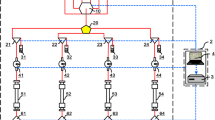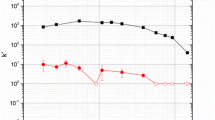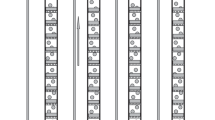Abstract
Extraction chromatographic separations following a nuclear event will require both speed and accuracy. Ideally these separations will be carried out using commercially available products. Because 90Sr is a likely material to be used in a radioactivity dispersal device, commercially available products for the separation of strontium were tested to evaluate differences in their elution profiles that may affect elution procedures. Gravity flow columns show better resolution, but vacuum flow columns allow rapid processing and are still adequate for purification if multiple aqueous conditions can be employed in the elution strategy.






Similar content being viewed by others
References
Andersson KG, Mikkelsen T, Astrup P, Thykier-Nielsen S, Jacobson LH, Hoe SC, Nielsen SP (2009) Requirements for estimation of doses from contaminants dispersed by a ‘Dirty Bomb’ explosion in an urban area. J Environ Radioact 100:1005–1011
Elcock D, Klemic GA, Taboas AL (2004) Establishing remediation levels in response to a radiological dispersal event (or “Dirty Bomb”). Environ Sci Technol 38(9):2505–2512
Parra RR, Medina VF, Conca JL (2009) The use of fixatives for response to a radiation dispersal devise attack—a review of the current (2009) state-of-the-art. J Environ Radioact 100(11):923–934
Ferguson CD, Kazi T, Perera J (2003) Commercial radioactive sources: surveying the security risks. Center for Nonproliferation Studies, Monterey Institute of International Studies, Monterey
Vajda N, Kim C-K (2010) Determination of radiostrontium isotopes: a review of analytical methodology. Appl Radiat Isot 68(12):2306–2326
Markl P, Schmid ER (1975) Techniques in column extraction chromatography. In: Braun T, Ghersini G (eds) Extraction chromatography. Elselvier, New York, p 45
Horwitz EP, Chiarizia R, Dietz ML (1992) A novel strontium-selective extraction chromatographic resin. Solvent Extr Ion Exch 10(2):313–336
Horwitz EP, Bloomquist CAA (1972) The preparation, performance and factors affecting band spreading of high efficiency extraction chromatographic columns for actinide separations. J Inorg Nucl Chem 34:3851–3871
Acknowledgments
This material is based upon work supported by the U.S. Department of Homeland Security under Grant Award Number, 2012-DN-130-NF0001. The views and conclusions contained in this document are those of the authors and should not be interpreted as representing the official policies, either expressed or implied, of the U.S. Department of Homeland Security.
Author information
Authors and Affiliations
Corresponding author
Rights and permissions
About this article
Cite this article
McLain, D.R., Mertz, C.J. & Sudowe, R. A performance comparison of commercially available strontium extraction chromatography columns. J Radioanal Nucl Chem 307, 1825–1831 (2016). https://doi.org/10.1007/s10967-015-4634-z
Received:
Published:
Issue Date:
DOI: https://doi.org/10.1007/s10967-015-4634-z




